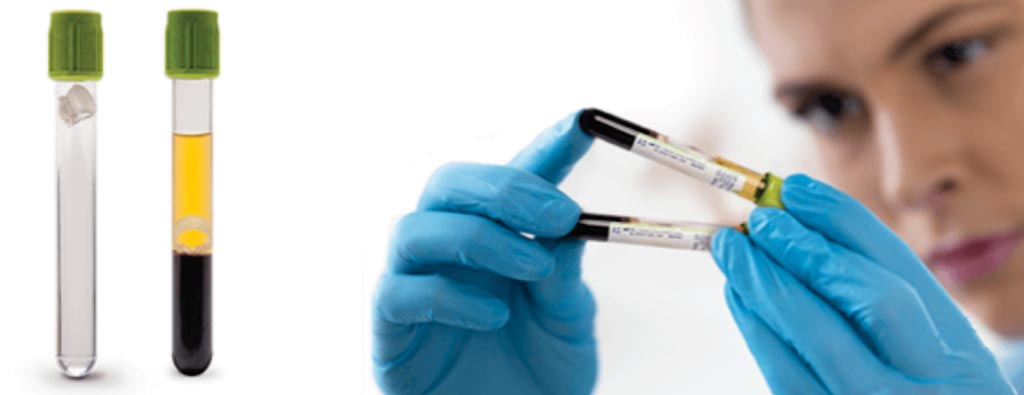Samples Quality Improved Using Low-Vacuum Tubes
By LabMedica International staff writers
Posted on 17 Jul 2019
Centrifugation is a time consuming step, which contributes to increase the turnaround time (TAT) in laboratories, likewise hemolyzed samples that needs a re-sampling could delay management of patients.Posted on 17 Jul 2019
So, the absence of hemolysis is one of the most important quality indicators for biochemistry as many analytes are influenced at the up or at the down with sample hemolysis. The hemolysis index is a measurement of the red color of serum. This color is normally due almost exclusively to the presence of hemoglobin, which comes from ruptured red blood cell membranes.

Image: The BD Barricor tube is a single-use, plastic evacuated tube with a mechanical separator used to collect, separate, transport and process venous blood specimens (Photo courtesy of Becton, Dickinson and Company).
Medical biochemists and their colleagues at the Lapeyronie University Hospital (Montpellier, France) evaluated the impact of replacing BD vacutainer heparin lithium tube by low-vacuum BD Vacutainer Barricor tube in an emergency department (ED) on hemolysis rate and TAT. In the first phase blood tests for biochemistry were all performed using 4 mL plastic BD Vacutainer lithium heparin tubes and tubes were then centrifuged during 15 minutes at 2,000g in an emergency dedicated Multifuge X3 FR Centrifuge.
After this first period, all 4 mL BD Vacutainer lithium heparin tubes were removed from the ED and replaced by 3.5 mL BD Vacutainer Barricor lithium heparin tubes during the one day of transition. Hemolysis Index (HI) was measured in the conventional unit (free hemoglobin mg/dL) on all tubes using the Cobas 8000 Roche test SSI-2 on a c701 module. Eight chemistry analytes were measured on the four different Cobas 8000 modules.
The scientists reported that a significantly reduced time duration between reception of sample and available results in informatics laboratory system was observed with the reduction time of centrifugation allowed by use of Barricor tube compared to regular heparin lithium tubes. A statistical significant decrease in hemolysis rate also occurred in the second period as samples with HI less than 10 reached from 52.5% in the first period to 68.5% in the second.
The authors concluded that their study highlighted two advantages when using low-vacuum Barricor tubes which was a reduction of centrifugation time allowing improvement of laboratory TAT and a reduction of hemolyzed samples that improve sample and result quality. The study was published on June 12, 2019, in the journal Practical Laboratory Medicine.
Related Links:
Lapeyronie University Hospital














